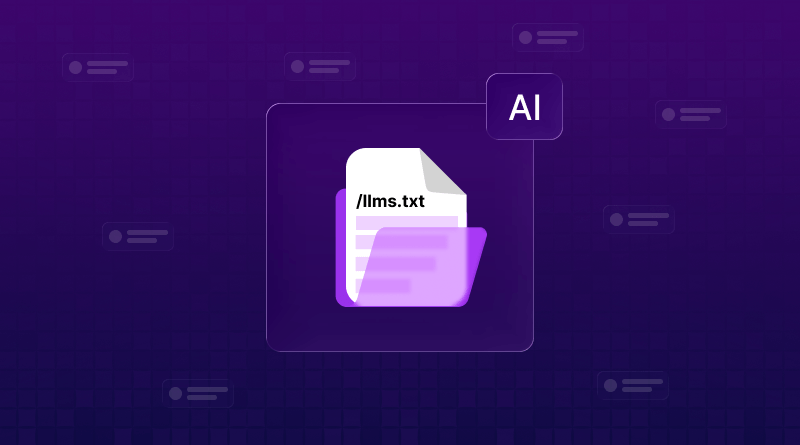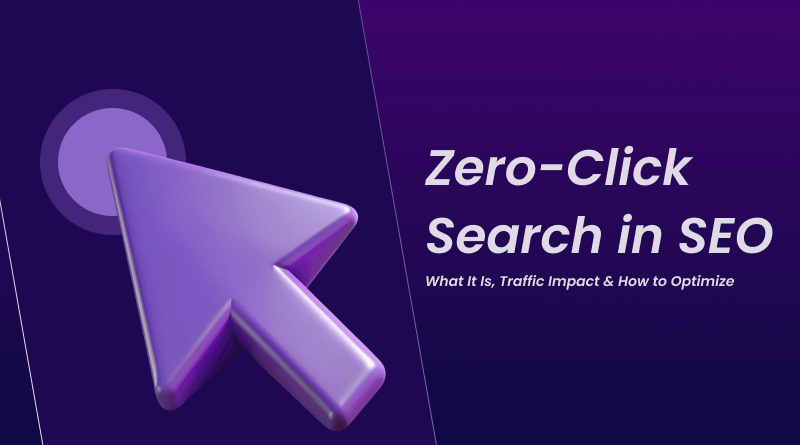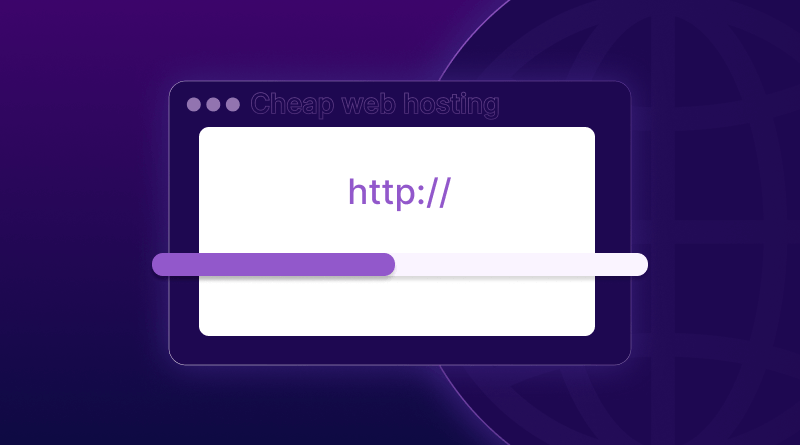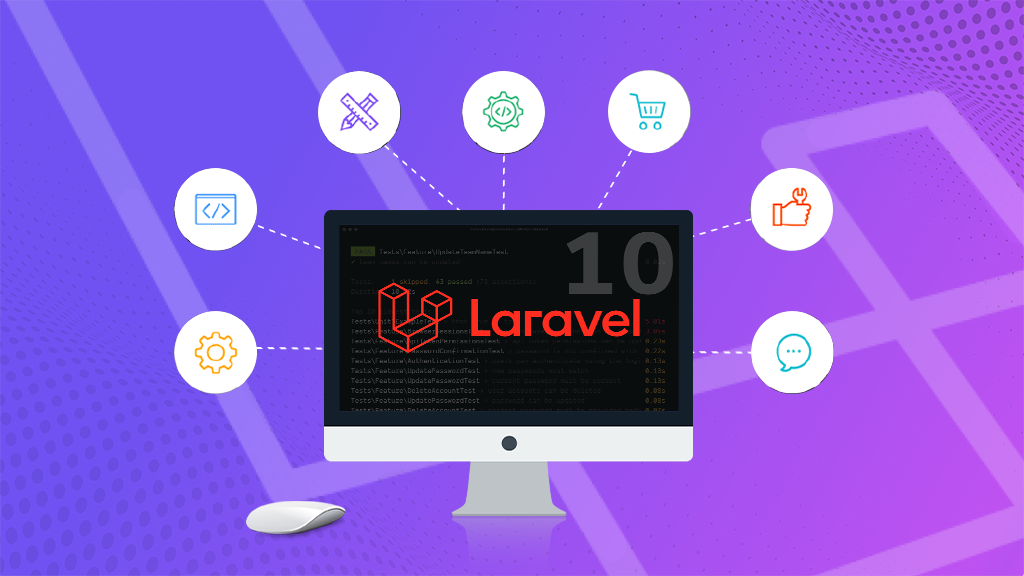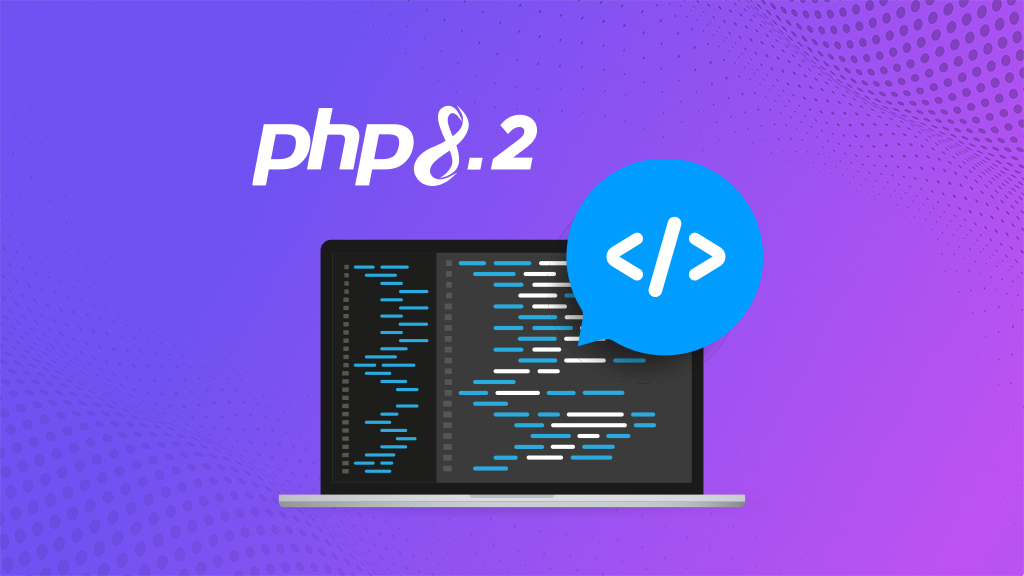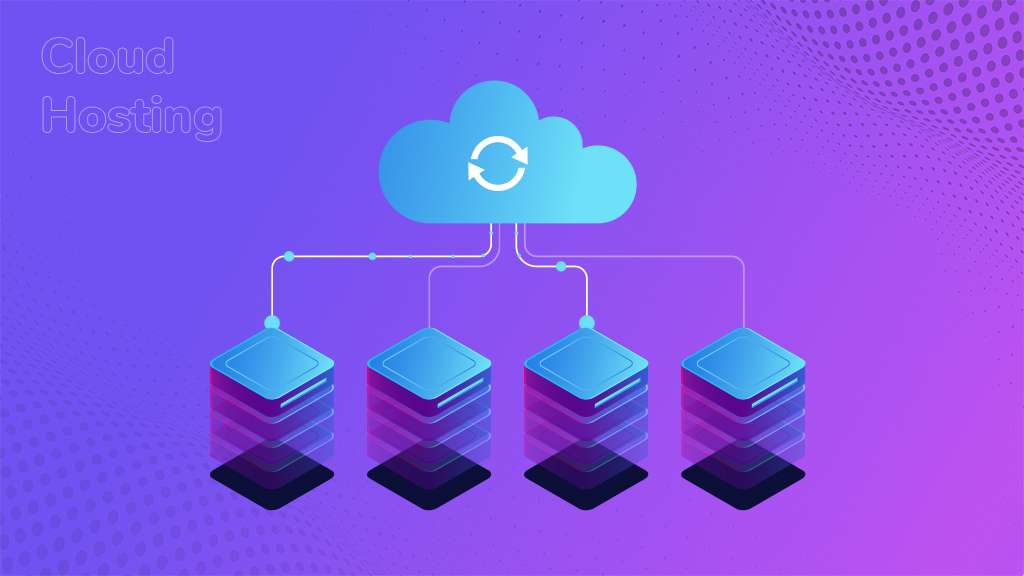
What is Laravel and why it’s important to optimize its performance?
Laravel is a popular open-source PHP framework that enables developers to build robust and scalable web applications. It provides a simple and elegant syntax, along with a wide range of features and tools that make development faster and more efficient. However, as your Laravel application grows, it is crucial to optimize its performance to ensure a smooth user experience.
BigCloudy provides the best hosting for Laravel Framework, which is optimized to deliver the best possible performance, with advanced techniques and strategies.
Optimizing the performance of your Laravel application is essential for several reasons. Firstly, it improves the overall speed and responsiveness of your application, reducing the loading time for your users. This is crucial in today’s fast-paced digital world, where users expect instant results. Secondly, optimizing performance helps to reduce server load and improve scalability, allowing your application to handle a larger number of concurrent users without sacrificing performance. Finally, a well-optimized Laravel application is more secure, as it minimizes the risk of vulnerabilities and exploits
Table of Contents
- What is Laravel and why it’s important to optimize its performance?
- Why is Laravel a popular framework for building enterprise-level applications?
- How can BigCloudy help you optimize your Laravel application?
- How we can help you monitor your Laravel application performance?
- Basic Steps to Optimise Performance
- Benefits of Laravel Performance Optimization
- Conclusion
Why is Laravel a popular framework for building enterprise-level applications?
Laravel is an important framework for businesses due to several reasons:
1. Rapid development
Laravel provides a clean and elegant syntax, along with a wide range of built-in tools and features. This allows developers to build web applications quickly and efficiently, reducing development time and costs.
2. Robust ecosystem
Laravel has a thriving ecosystem with a vast collection of libraries, packages, and extensions, known as the “Laravel ecosystem.” This ecosystem provides solutions for various common tasks, such as user authentication, caching, database management, and more. It saves development time and effort by allowing developers to leverage existing solutions instead of building everything from scratch.
3. Scalability and performance
Laravel is notably designed to handle high-traffic applications and scale effectively. It offers features like database query caching, lazy loading, and optimized routing, which contribute to improved performance. Additionally, Laravel integrates well with popular caching systems like Redis and Memcached, allowing businesses to scale their applications as needed.
4. Security
Laravel prioritizes security and provides several features to protect against common web vulnerabilities, including cross-site scripting (XSS), SQL injection, and cross-site request forgery (CSRF). It includes built-in protection mechanisms, such as input sanitization, parameter binding, and encryption, making it a reliable choice for businesses that deal with sensitive user data.

5. Community support
Laravel has a large and active community of developers who contribute to its growth and provide support. The community offers extensive documentation, tutorials, forums, and packages, making it easier for developers to learn and resolve issues. This ensures that businesses using Laravel have access to a wide pool of expertise and resources.
6. Integration capabilities
Laravel seamlessly integrates with other services and tools commonly used in business environments. It supports popular databases, message queues, cloud storage services, and APIs. This allows businesses to connect their Laravel applications with external systems, enabling efficient data exchange and integration with existing infrastructure.
7. Long-term viability
Laravel is a well-established framework that has been around for several years, and it has gained widespread adoption in the development community. Its stability and continuous development ensure that businesses can rely on it for the long term, reducing the risk of having to rewrite their applications or face major compatibility issues.
How can BigCloudy help you optimize your Laravel application?
BigCloudy is indeed a powerful cloud-based platform that offers a range of tools and services to help developers optimize their Laravel applications. With BigCloudy, you can easily identify and resolve performance bottlenecks, improve the efficiency of your code, and enhance the overall user experience.
One of the key features of BigCloudy is its comprehensive performance monitoring tool. This tool allows you to monitor various metrics of your Laravel application, such as response time, memory usage, and database queries. By analyzing these metrics, you can identify areas of your application that are causing performance issues and take the necessary steps to optimize them. Additionally, BigCloudy provides real-time alerts and notifications, allowing you to proactively address any performance issues before they impact your users.
Another way BigCloudy helps optimize your Laravel application is through its code profiling feature. This feature allows you to analyze the execution time of different parts of your code and identify areas that can be optimized for better performance. By optimizing your code, you can reduce unnecessary database queries, eliminate redundant function calls, and improve the overall efficiency of your application.
How we can help you monitor your Laravel application performance?
Monitoring the performance of your Laravel application is essential to ensure its smooth operation and identify potential issues before they impact your users. BigCloudy offers a range of monitoring tools and services that make it easy to track the performance of your Laravel application and take necessary actions to optimize it.
One of the key monitoring features of BigCloudy is its real-time performance dashboard. This dashboard provides a comprehensive overview of various performance metrics, such as CPU usage, memory usage, and response time. With this information at your fingertips, you can quickly identify any performance bottlenecks and take immediate action to resolve them.
BigCloudy also offers detailed performance reports that provide insights into the performance trends of your Laravel application over time. These reports help you identify patterns and trends that may impact the performance of your application and allow you to make informed decisions to optimize its performance.
In addition to performance monitoring, BigCloudy also offers comprehensive error tracking and logging capabilities. This allows you to monitor and track any errors or exceptions that occur in your Laravel application, helping you identify and resolve issues before they impact your users. By proactively addressing errors, you can ensure a seamless user experience and improve the overall performance of your application.
Basic Steps to Optimise Performance
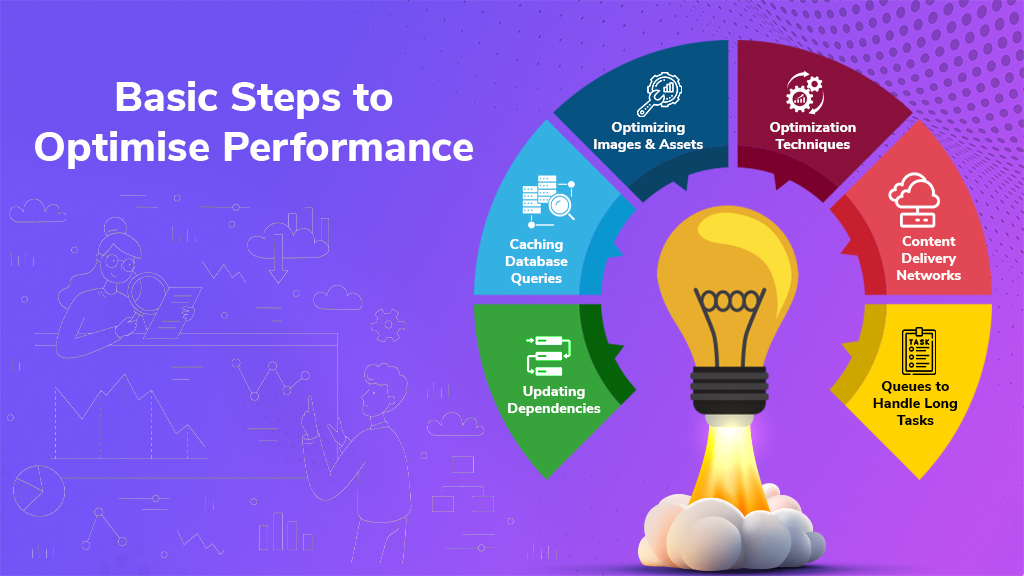
1. Updating Dependencies
One of the first steps in optimizing your Laravel application is to ensure that you are using the latest versions of your dependencies. Laravel regularly releases updates that include bug fixes and performance improvements. By updating your dependencies to the latest versions, you can take advantage of these optimizations and ensure that your application is running at its best.
To update your dependencies, you can use the Composer package manager. Simply run the composer update command in your project’s root directory, and Composer will automatically update your dependencies to their latest versions. Make sure to review the release notes of each dependency to understand the changes and improvements that have been made.
2. Caching Database Queries
Another effective way to optimize your Laravel application’s performance is by caching database queries. Database queries can be resource-intensive, especially if they are executed frequently. By caching the results of these queries, you can reduce the load on your database and improve the response time of your application.
Laravel provides a convenient caching mechanism that allows you to cache the results of database queries with minimal effort. You can use the cache() helper function to store and retrieve data from the cache. To cache the result of a database query, simply wrap the query code with the cache() function, specifying a unique cache key. Subsequent requests for the same query will then retrieve the cached data instead of executing the query again.
3. Optimizing Images & Assets
Optimizing images and assets is another important aspect of optimizing your Laravel application’s performance. Large image files and unoptimized assets can significantly slow down your application’s loading time. By compressing and optimizing these files, you can reduce their size and improve the overall performance of your application.
There are various tools and techniques available for optimizing images and assets. One popular tool is BigCloudy’s Image Optimization feature. This feature automatically compresses and optimizes your images, reducing their file size without compromising their quality. By integrating BigCloudy’s Image Optimization feature into your Laravel application, you can easily optimize all the images used in your application with just a few lines of code.
4. Use CDNs for Static Content Delivery
Content Delivery Networks (CDNs) are a great way to improve the performance of your Laravel application, especially when it comes to delivering static content such as CSS, JavaScript files, and images. CDNs store copies of your static content in multiple servers located in different geographical locations. When a user requests a file, the CDN delivers it from the server that is closest to the user’s location, reducing the latency and improving the loading time.
By integrating BigCloudy’s CDN feature into your Laravel application, you can easily leverage the power of CDNs and deliver your static content faster to your users.
5. Utilize Queues to Handle Long-Running Tasks
Long-running tasks, such as sending emails or processing large amounts of data, can significantly impact the performance of your Laravel application. By offloading these tasks to a queue, you can improve the responsiveness of your application and ensure that your users do not experience delays.
Laravel provides a powerful queueing system that allows you to easily manage and process tasks in the background. By integrating BigCloudy’s Queueing feature into your Laravel application, you can easily set up and manage queues for your long-running tasks, ensuring that they are processed efficiently and without affecting the performance of your application.
i. Reduce the Libraries
Laravel comes with a large number of pre-installed libraries. While these libraries can be useful, they can also add overhead to your application. If you are not using a particular library, it is best to remove it from your application. This will reduce the size of your application and improve its performance.
To remove a library from your Laravel application,
open the composer.json file and remove the library from the required section. Then, run the composer update command to update your application's dependencies.ii. JIT Compiler
The JIT compiler can improve the performance of your Laravel application by compiling your PHP code to machine code at runtime. This can lead to significant performance improvements, especially for complex applications.
To enable the JIT compiler,
open the php.ini file and set the jit. enabled directive to true. Then, restart your web server.iii. Use the latest version of PHP
Newer versions of PHP often include performance improvements. By using the latest version of PHP, you can ensure that your Laravel application is running as efficiently as possible. To upgrade your PHP version, contact your hosting provider or system administrator.
Benefits of Laravel Performance Optimization
1. Growth in the Business
A fast and responsive website is essential for any business that wants to succeed online. Visitors are more likely to stay on a website that loads quickly and easily, and they are also more likely to convert into customers. By optimizing your Laravel application, you can improve your page load times and provide a better user experience for your visitors. This can result in heightened website traffic, improved conversion rates, and, in the end, increased revenue for your business.
2. Cuts down the Development Time and Cost
A well-optimized Laravel application is easier to develop and maintain. This is because optimized code is more efficient and easier to understand. As a result, developers can spend less time writing and debugging code, and they can focus on adding new features and functionality to your application. This has the potential to be a time and cost-saving measure in the long term.
3. Better Traffic Management
A Laravel application that is optimized for performance can handle more traffic without experiencing any bottlenecks. This is because optimized code uses fewer resources and can process requests more quickly. As a result, your website will be able to handle more visitors and traffic spikes without any problems. This is especially important for businesses that have seasonal traffic spikes or that are planning to launch a new marketing campaign.
Conclusion
In conclusion, optimizing the performance of your Laravel application is crucial for delivering a seamless and responsive user experience. With the help of BigCloudy, you can easily monitor the performance of your Laravel application, identify potential bottlenecks, and take necessary actions to optimize its performance. So, if you want to take your Laravel application to the next level, start optimizing its performance with BigCloudy today!


